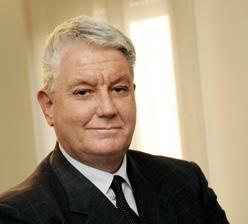
2 minute read
Swift support during COVID-19
Leadership in an emerging crisis
On 23 March 2020, less than twoweeks after COVID-19 was declared a pandemic, ESE issued its statement COVID-19 and endocrine diseases, on the role of endocrinologists worldwide during the outbreak, including a ‘decalogue’ for endocrinologists. Within a matter of weeks, it had been downloaded 10 000 times. April saw ESE and Endo-ERN launch an initiative to collect data on patients with rare endocrine conditions and COVID-19, which were added to EuRRECa, the rare disease registries.
Advertisement
Publications and webinars developed by ESE supported the endocrine community during the pandemic.
ESE’s numerous COVID resources can be found at
www.ese-hormones.org/ covid-19-and-endocrine-disease.
Andrea Giustina spoke to members in a video statement
www.youtube.com/ watch?v=-OMy3aW219c.
Guidance, education and support
In April, European Journal of Endocrinology commissioned a review series, freely available online, entitled Endocrinology in the time of COVID-19. This supported the management of patients when endocrinologists’ diagnostic and therapeutic capacity faced unprecedented restrictions.
ESE Talks: Endocrine conditions in the
COVID-19 era was a series of live webinars in May, featuring the latest endocrine science, presented by the world’s leading experts. The content remains available to watch on demand.

The ESE COVID-19 Research Grant provided support to address scientific questions in COVID-19 research that relate to endocrinology and metabolism.
Giulia Brigante, recipient of the first ESE COVID-19 Grant
A listening ear
ESE News, our newsletter for members, carried articles on the perspectives of clinicians, researchers and patients throughout the crisis: this ensured their voices did not go unheard.
‘A patient with active Cushing’s syndrome had a severe pneumonia and was intubated. We managed to control the cortisol excess, but the patient progressively worsened due to a bacterial infection. She eventually died in intensive care, alone, and had no funeral ceremony: a sad fate shared by many in that period.’
Massimo Terzolo
Professor of Internal Medicine, Italy ‘It has been confusing to hear different attitudes from different endocrinologists in Denmark, England, Norway and especially their health authorities. So what is the right thing to do?’
Tina Schrøder Kallestrup
Patient with Addison’s disease and vitiligo
‘I came in to a post-take ward round on 28 March where the night team had been overwhelmed in a way never seen before. Hypoxic patients were arriving in large numbers. It became clear that my hope of coping without major change would not be possible.’
Karim Meeran
Professor of Endocrinology, UK




